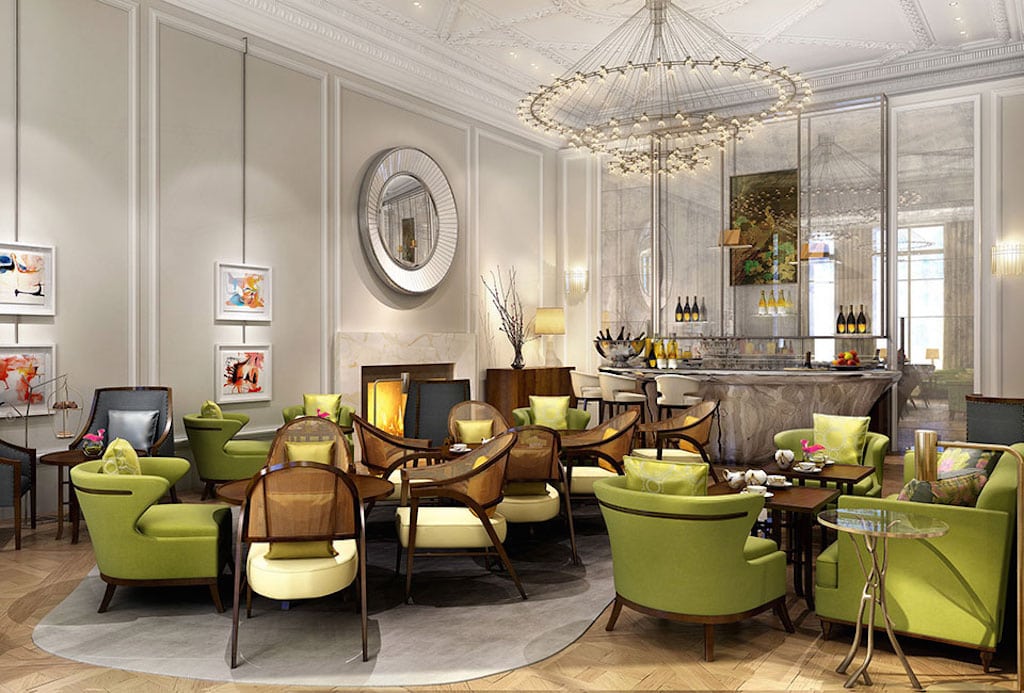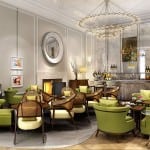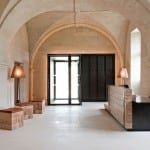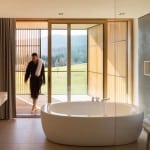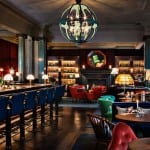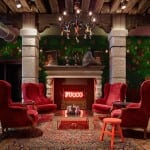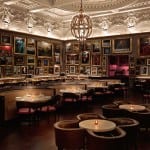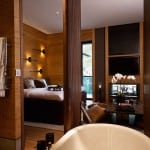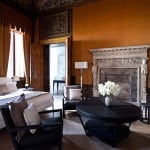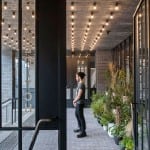Skift Take
While many of the award winners in this year's lineup offer sumptuous hotel experiences, there's a somewhat narrow scope and surprising lack of modern innovation.
- The Rosebery Bar at Mandarin Oriental Hyde Park, London
- Fontevraud L’Hôtel, France
- Lanserhof Tegernsee, Germany
- Scarfes Bar at Rosewood London
- Generator Venice
- The Berners Tavern and Punch Room at The London EDITION
- Guest room at The Chedi Andermatt
- One of 24 suites at Aman Canal Grande Venice
- Ace Hotel London Shoreditch
- Tomorrow’s Hotel places a priority of food sourcing.
The winners of this year’s European Hotel Design Awards (EHDA), announced during Sleeper Magazine’s Sleep event in London last month, emphasized classic elegance and global hospitality chains.
From The Suites at Aman Canal Grande in Venice to The Rosebery Bar at Mandarin Oriental Hyde Park in London, most of the winners target the wealthy older traveler seeking no shortage of candles, crown moulding and chandeliers. There are however just enough entrants from brands like Ace Hotels and Generator Hostels to avoid these awards from becoming strictly a luxury travel endeavor.
Over the last two years, we’ve seen a return to timeless appeal in hotel design globally as hotel architects and interior designers have grown wary of the speed with which design trends and technology rise and fade away from one year to the next. That’s further compounded by the ubiquity today of “design hotels” that no longer provide the head-turning spirit of originality and innovation they once did in a market crowded with lifestyle brands.
The European Hotel Design Awards also seem to be a little less representative of the European continent in its entirety than you might expect. Strange, for example, that all three of the F&B category award winners are located in London.
Awards were presented in two main categories: Architecture and Interior Design, with multiple sub-categories for each. There were also three standalone awards for Tomorrow’s Hotel, Outstanding Contribution, and the overall European Hotel Design of the Year, as well as four “Commended” runner-up awards.
Here is a sample selection of award winners among the various categories.
Architecture — Adaptive Re-use & Newbuild
Located in western France on the road to Nantes, the reinterpretation of the 12th century Fontevraud L’Hôtel, France won the Adaptive Re-use award, bridging a pre-Renaissance provenance with a 21st century guest experience.
The building was originally a monastery constructed with imposing Roman arches that still direct the design narrative throughout the 54-room hotel. The subtly modern furnishings and elements are minimalist and muted to not detract from the historical gravitas. In fact, there’s an almost Scandinavian priority on natural materials, natural light and delicate scale to avoid any solemnity often encountered with religious-based projects.
Judges’ comments: “[The Gabor Mester de Parajd architecture firm] has shown real skill in the use of volumes and scale, with modern elements delicately inserted into the monastic shell of the building.”
Opened in January 2014, the Lanserhof Tegernsee hotel in Marienstein, Germany is a highly sustainable and modern re-creation of the classic Bavarian spa resort. The 70-room property won both the Newbuild Architecture and Spa/Wellness Interior Design categories, earning it the top overall European Hotel Design Award as well.
The boxy, wooden and steel exterior with voluminous window space and natural light seeks to lessen the border between the inside and outside. Also, both the public spaces and guest rooms are expansive and simply laid out so they don’t distract guests relaxing in their trance-like spa stupor.
Judges’ comments: “This is pure architecture—a bold and contemporary yet elegant design, as beautiful today as it will be in 30 years time…. This serene environment is perfectly suited for its introspective use. The material palette of wood and metal will only get better as they patinate.”
Interior Design — F&B
The Bar design award went to the Scarfes Bar at the new Rosewood London, which symmetrically bookends the hotel’s entrance across from the Holborn Dining Room. The genius of the Rosewood design is having the restaurant and bar positioned where they are, inviting a robust local scene, with the Mirror Room lobby lounge adjoining the two F&B outlets.
However, awarding Scarfes the best hotel bar design in Europe feels like a bit of a stretch. It blends the listed architectural elements with modern touches of warmth exceedingly well, but it’s not especially innovative.
Judges’ comments: “[Designer] Martin Brudnizki has mixed vintage pieces with bespoke elements to great effect. The Gerald Scarfe murals are the icing on the cake, creating a point of interest which is relevant to the brand, and a use of artwork in harmony with its surroundings.”
The Berners Tavern and Punch Room at The London EDITION was anointed top Restaurant at the EHDA event. Hotel icon Ian Schrager contracted Toronto’s Yabu Pushelberg firm to handle the redesign, and it truly is a masterpiece encompassing one of the country’s most dramatic Belle Epoque ceilings.
The combination of so many classic European paintings covering every inch of the walls, modern banquettes covered in chestnut mohair and taupe leather, round bleached oak tables in the central dining area, the 18-foot ceiling, and a Parisian zinc bar absolutely sing in symbiotic harmony. This is an example of a thousand nuanced decisions that could have fallen apart in lesser hands.
Furthermore, The EDITION’s always buzzy lobby lounge leading into Berner’s Tavern won a Commended category shout out for best Lobby, Lounge & Public Area.
Judges’ comments: “Ian Schrager knows about theatre and Yabu Pushelberg have created a space that works as well at night as it does for breakfast. The judges described this restaurant as a fabulous, fun and friendly feast for the senses.”
Interior Design — Rooms & Suites
The award for top hotel Bedroom/Bathroom went to The Chedi Andermatt in Switzerland, which is one of a spate of Swiss resorts contributing to the modernization of the Swiss ski lodge trend. The Malaysian-based Denniston architecture and design firm brought a subtle Asian voice to the dark chocolate rooms with light oak and walnut timber, honed blue stone, oyster grey leather and blackened steel.
The bathrooms are fun where couples can see the wood-burning fireplace and large flatscreen TV from the comfort of the deep bathtubs.
Judges’ comment: “Their designs for the guest rooms at Andermatt bring warmth, comfort and luxury to this modern take on the traditional Swiss chalet aesthetic.”
Denniston also designed the winner of best hotel Suites category. The Suites at Aman Canal Grande in Venice blend modern furnishings and fabrics with architectural elements dripping with history and romance. There’s a reason why George Clooney and Amal Alamuddin decided to tie the knot here recently. Each of the 24 suites have their own identity befitting any number of Italian eras dating back to the palazzo’s original construction in 1550.
Judges’ comment: “This is a landmark project in every sense—an incredible restoration project that has brought a new breed of luxury to a destination already saturated with 5-star hotels. Denniston has managed to create a perfect blend of heritage and modernity.”
Architecture — Renovation / Outstanding Contribution
Ace Hotel London Shoreditch won the Renovation award in the Architecture category, and much of that has to do with the late co-founder of Ace Hotels, Alex Calderwood. The innovative hotelier was posthumously given the Outstanding Contribution award at EHDA 2014.
The award description reads: “Ace re-envisions the traditional hotel model, enhancing the value of properties through an innovative and locally-inspired approach to design and development. Through custom-tailored branding, design and programming, Ace brings new life to challenged properties in emerging locations and seamless integration to new construction.”
Tomorrow’s Hotel
London-based Dexter Moran Associates came up with the best design in the conceptual Tomorrow’s Hotel category, named The Edible Hotel. This hotel design concept seems to keep returning in various forms every year, although no one is actually building it. The idea of a hotel with extensive gardens to source food, public kitchens to prepare foods, and programming to educate consumers about sustainable urban farming should eventually take root in a metropolitan city.
The architectural design incorporates living walls and large aquariums for hydro/aquaponic food production, and large social spaces for preparation, cooking and learning about the ongoing state of food supply and population growth.
Here is the creative brief for the hotel design from Dexter Moran:
“We set ourselves the challenge of addressing how a hotel of the future will deal with sourcing food both onsite and locally within a densely populated urban environment. Urban farming offers to make our food as local as possible. By growing what we need near to where we live or stay we decrease the food miles associated with long distance transportation and consume the freshest possible produce. In response to our own brief we have developed the concept for a self-sufficient hotel which can generate its own food source by design. It was out of this concept that The Edible Hotel was born.”
Full List of Winners
- Architecture — Adaptive Re-use: Fontevraud L’Hôtel, France
- Architecture — Newbuild: Lanserhof Tegernsee, Marienstein, Germany
- Architecture — Renovation: Ace Hotel London Shoreditch
- Interior Design — Lobby & Public Areas: Generator Venice, Italy
- Interior Design — Bar: Scarfes Bar at Rosewood London
- Interior Design — Cafe Bar: The Rosebery Bar at Mandarin Oriental Hyde Park London
- Interior Design — Rooms/Bedrooms: The Chedi Andermatt
- Interior Design — Suites: The Suites at Aman Canal Grande
- Interior Design — Spa/Wellness: Lanserhof Tegernsee, Marienstein, Germany
- Outstanding Contribution: Alex Calderwood, co-founder of Ace Hotel
- Tomorrow’s Hotel: The Edible Hotel
- European Hotel Design of the Year: Lanserhof Tegernsee, Marienstein, Germany
Greg Oates covers tourism & hospitality development. Email him at [email protected].
Have a confidential tip for Skift? Get in touch
Tags: Sleep
Photo credit: The Rosebery Bar at Mandarin Oriental Hyde Park, London. Mandarin Oriental
